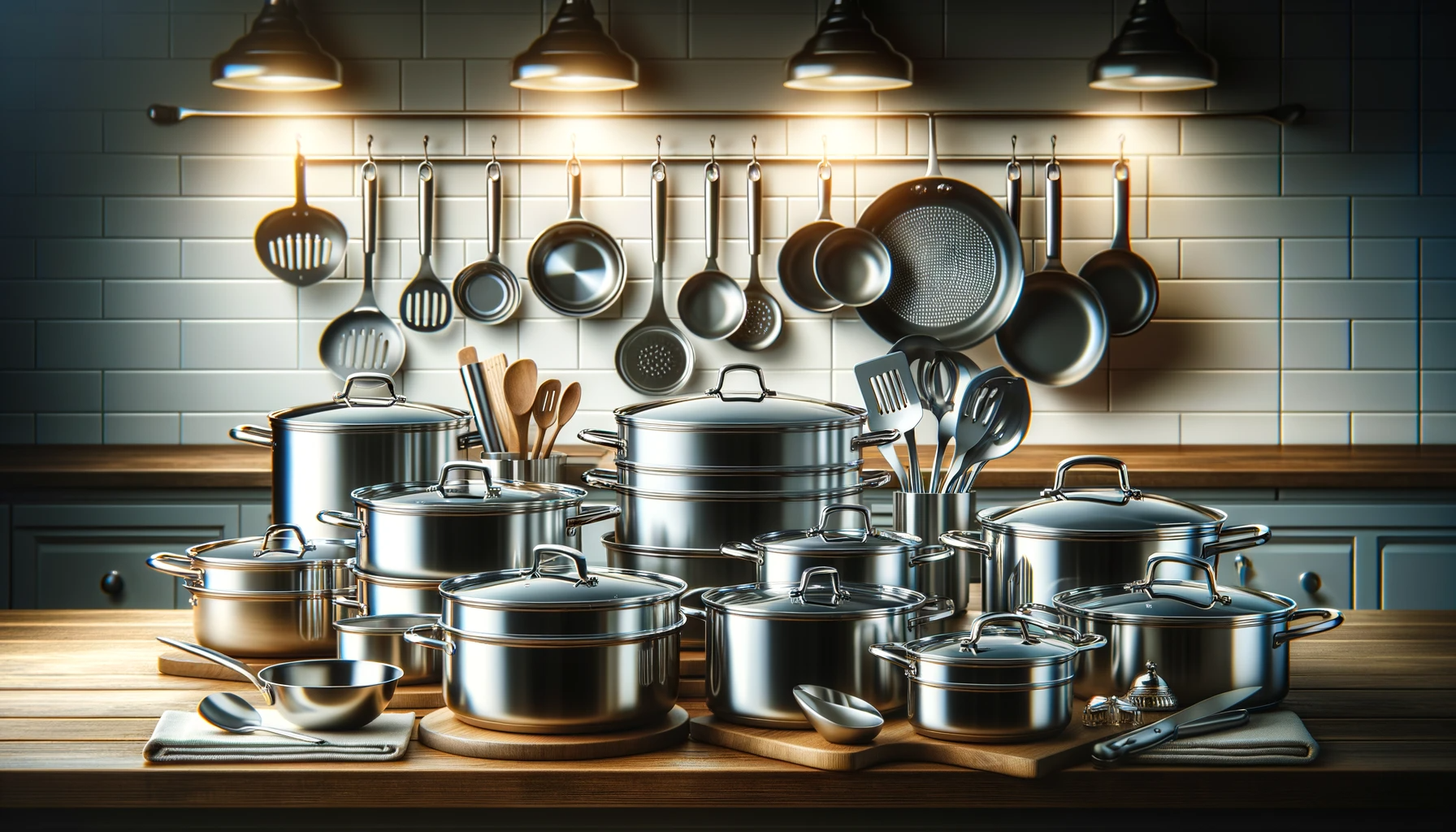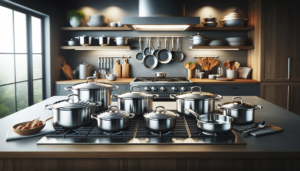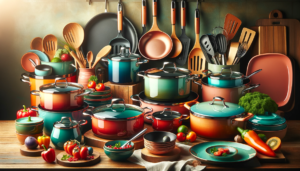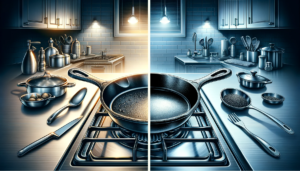With so many cookware options lining store shelves, deciding between stainless steel versus nonstick or ceramic can feel overwhelming.
Which material works best for everyday cooking needs?
Stainless steel pots and pans offer unique advantages but also pose some downsides to consider before purchasing.
Let’s dive into an in-depth look at the pros and cons of stainless steel cookware to make an informed choice for your kitchen.
The Pros of Stainless Steel Cookware
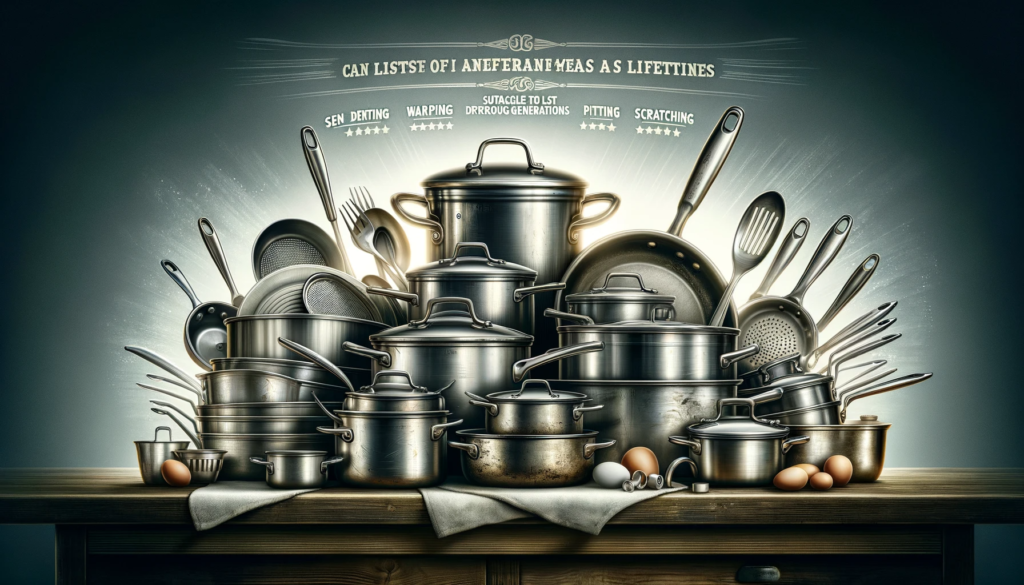
Durability
Stainless steel pots and pans are very durable and long-lasting kitchen tools.
They stand up extremely well to the rigors of daily home cooking without losing structural integrity.
Stainless steel cookware resists denting, warping, pitting, and scratching much better than pots and pans made from softer materials like aluminum or copper.
With proper care and maintenance, quality stainless steel cookware can literally be used for a lifetime before needing replacement.
The sturdy construction means stainless steel pots and pans can be passed down for generations while still performing beautifully in the kitchen.
Even with heavy repeated use, stainless steel maintains its strength and shape better than other cookware materials.
The hardy structure allows stainless steel to withstand the high heat required for activities like searing meats, frying foods, boiling water, and more without issues.
Many stainless steel pots and pans are oven safe to temperatures around 500-550 degrees Fahrenheit.
This allows cooks to start dishes on the stovetop then transfer them directly to a hot oven to finish cooking if desired.
The high durability and oven safe properties make stainless steel a great investment that will far outlast nonstick or other less hardy cookware materials.
Stain Resistance
Stainless steel cookware does not react with foods during the cooking process.
This means it does not impart any metallic tastes or odors to food prepared in stainless steel pots and pans.
Stainless steel instead provides a neutral cooking surface, allowing the flavors of the foods themselves to shine.
Food cooked in stainless steel tastes as it should without picking up any oxidized flavor from the cookware material.
This makes stainless steel ideal for delicate dishes where you don’t want other flavors intefering.
This neutrality is unlike some cookware materials such as copper or aluminum that can react with acidic food ingredients like tomatoes, citrus, vinegar, and wine.
Those materials can leach into foods being cooked, damaging intended flvaors.
The non-reactive stainless steel allows sauce ingredients, fresh herbs, spices, and foods themselves to retain their own complex flavors without interference.
Keeping stainless steel cookware looking clean is also quite straightforward.
The surface does not react with oils, sauces, or foods being cooked.
As a result, food bits and cooking residues do not get stuck into or embedded within the surface of stainless steel over time.
This allows even heavily used stainless steel pots and pans to be restored to like-new status with a little elbow grease.
Whereas nonstick surfaces eventually wear out and degrade, stainless steel maintains its original pristine appearance for long lasting beauty and utility when properly cared for.
Even Heating
Stainless steel earns praise for its ability to evenly distribute heat energy across the entire exposed cook surface.
Even heating allows for precisely controlled simmering, boiling, searing, caramelizing, and frying without any unexpected hot or cold spots when preparing food.
There are no random burnt bits or undercooked centers.
The uniform heat distribution prevents ring marks along the bottom.
It also enables gentle even bubbling when simmering sauces, stocks, or soups.
Searing meats and other ingredients over stainless steel also proceeds more controllably thanks to the whole surface heating evenly.
No need to worry about random undercooked patches or dried out overcooked areas with quality stainless steel cookware.
This makes temperature regulation during cooking simpler for beautiful results.
Some stainless steel cookware is specially engineered to maximize even heat distribution through design elements.
Disk bottoms, encapsulated bottoms, or tri-ply construction with an aluminum or copper core sandwiched between stainless exterior layers are some techniques manufacturers use to optimize heat conductivity.
The aluminum and copper interior layers rapidly transmit warmth across the whole stainless surface.
Pay attention to component metals and design extras when purchasing stainless cookware.
Oven and Dishwasher Safe
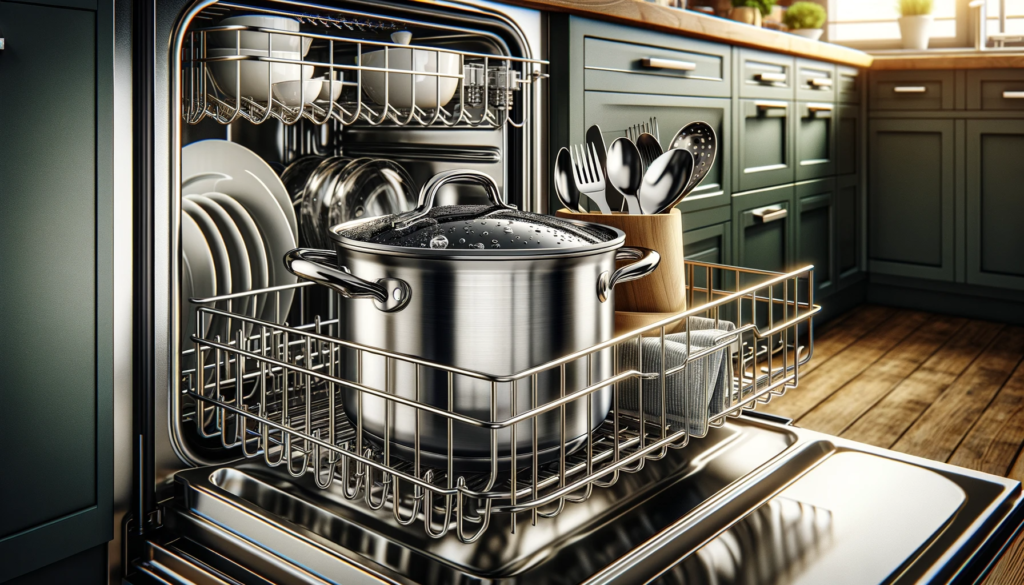
Most quality stainless steel cookware is oven-safe up to fairly high temperatures around 500-550 degrees Fahrenheit, depending on the specific brand.
This convenient trait allows stainless steel pots and pans to go seamlessly from stovetop cooking directly into a hot oven if desired.
Oven-safe abilities are handy when finishing off foods with a nice browning, crisping up breaded coatings, melting cheeses, or simply keeping items warm until serving.
As one example, cooks can start chicken pieces skin side down on the stovetop to render some fat.
Then transfer the pan directly into a hot oven to finish roasting and achieve supremely crispy skin.
Casseroles and baked pasta dishes also benefit from starting covered on the stove to meld flavors, then moving to the oven uncoverered to brown.
This flexibility enables cooks to start dishes on the stove then transfer them to the oven beautifully.
In addition to being oven safe, stainless steel cookware stands up quite well to commercial or home dishwashers.
The durable stainless surface resists erosion and deterioration from strong detergents, hot water, and turbulence inside dishwasher cavities.
Of course, hand washing is still best practice to preserve the beauty and utility of fine stainless cookware.
But the dishwasher safe abilities allow busy home cooks to clean up stainless steel pots and pans efficiently after meals when required.
Non-Reactive

The chromium content used in quality stainless steel alloys allows the material to strongly resist reacting with acidic food ingredients.
High acid foods like tomatoes, citrus fruits, vinegars, and wines will not cause corrosion of stainless steel cookware over time.
Simmering tomato sauce or lemon chicken piccata for an extended duration still will not damage or pit stainless steel pans.
This non-reactive trait provides confidence when cooking foods containing tomatoes, deglazing with wine, or incorporating citrus without worries.
In contrast, unlined copper and aluminum pans will react negatively when exposed to acidic ingredients repeatedly.
This can cause pitting, erosion, and other degrading issues over time.
Using highly acidic ingredients routinely with unlined copper or aluminum is not recommended.
Additionally, those more reactive metals will impart a distinct metallic flavor into acidic foods being cooked in them which alters intended flavors.
The neutral stainless steel keeps food tasting properly without damaging pans even with regular acidic cooking.
Non-Porous
Quality stainless steel cookware features a smooth, non-porous cooking surface.
The tight metal grain structure resists trapping burnt on food particles within pores during cooking.
This means oils, fats, and other cooking residues do not soak into microscopic pores to become stubbornly stuck.
The non-porous qualities allow the stainless steel surface to be scrubbed completely and easily clean after each use.
The slick non-porous stainless steel maintains consistent cooking performance and release qualities meal after meal.
Other more porous cookware materials like cast iron or anodized aluminum rely on building up a non-stick seasoning coating over time.
But their small surface holes and cracks gradually trap old food bits that alter sliding release.
The easy to clean non-porous stainless steel removes all residues for reliable cooking day in and day out.
The Cons of Stainless Steel Cookware
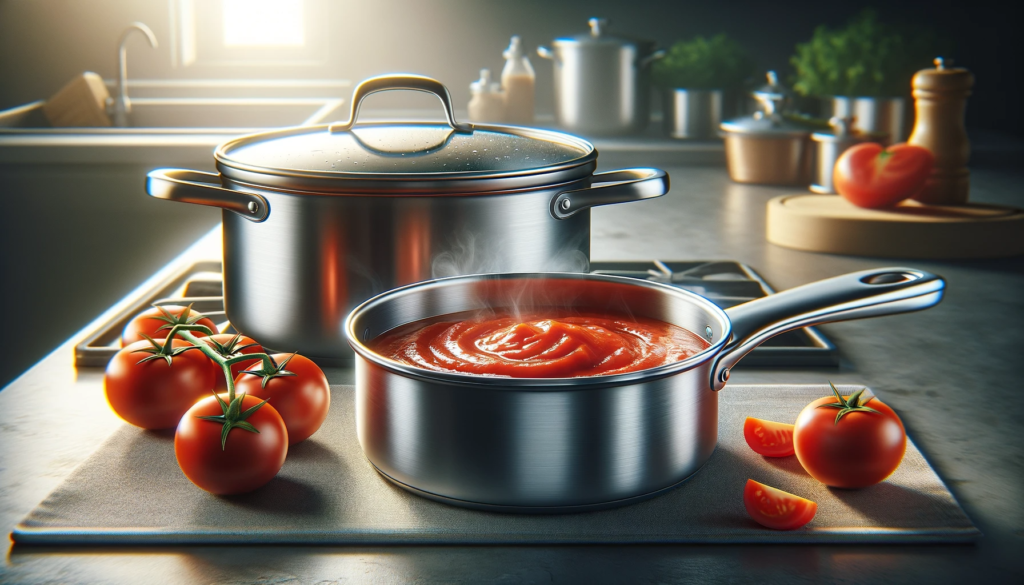
Poor Heat Conductor
On its own, stainless steel alloy conducts heat relatively poorly compared to other metals used for cookware.
To maximize conductivity, manufacturers must use special construction techniques when making stainless steel pots and pans.
Typically this involves bonding or encapsulating additional sheets of more conductive metals like aluminum or copper.
These two metals each excel at rapidly and evenly transmitting heat energy across their surface.
Quality tri-ply stainless steel cookware sandwiches an aluminum or copper core layer between two exterior stainless steel surfaces.
This combines the ideal heat responsiveness and conductivity of the center metal with the durability, ease of cleaning, and neutral flavors provided by the stainless walls.
Without supplementary heat conductive metals incorporated properly, bare stainless steel is quite slow to heat up initially.
It also inconsistently transfers warmth, leading to poor temperature regulation.
When purchasing stainless steel cookware, be sure some amount of aluminum or copper is integrated within the design to aid heating capabilities.
Pay attention to component metals used and conductivity enhancing design elements employed by manufacturers.
Avoid assume plain stainless steel will heat adequately on its own.
Seek pans promoting even heating for best cooking experiences.
Can Warp
Quality stainless steel cookware designed with appropriately thick heavy gauges of metal is generally quite resistant to warping during everyday cooking tasks.
But cheaper lightweight cookware constructed from thinner stainless steel can become misshapen or warped under high direct heat exposure.
Bringing poorly made thin stainless steel pans quickly to very high temperatures can cause the metal to rapidly expand unevenly.
This promotes bubbles, divots, and spin that prevent cookware from sitting flush against stove burners or inside ovens.
Pay special attention to metal thickness gauges when evaluating stainless steel cookware purchases.
Thinner stainless steel is certainly cheaper, making it attractive for those on tight budgets.
But thinner metal is inherently more vulnerable to warping issues over time, especially once some wear and tear accumulates from repeated use.
Investing in high quality heavyweight stainless steel pans typically pays off via enhanced durability, longevity of use, and reliable flat bases during cooking.
While using stainless steel cookware, try to heat it gradually and evenly to prevent excessive sudden hot spots.
Uneven extreme heat exposure can deform thinner stainless before defects become visible.
Avoid cranking burners to the highest flame heights when preheating.
And incorporate some liquid or oil before direct dry heating to regulate temperatures.
With care, even bargain stainless steel holds up reasonably well.
But heavy gauge pans resist warping best for worry-free high heat cooking tasks.
High Cost
Quality stainless steel pots and pans do typically cost noticeably more than basic cookware made from aluminum, ceramic, carbon steel, or other common metals.
The higher expenses stem primarily from more involved manufacturing processes, thicker metal gauges, and integration of optimal heat conducting metals like copper or aluminum.
Since quality stainless cookware is built to last for many years rather than be disposable, the elevated costs are justifiable for serious home cooks.
Of course bargain stainless steel cookware exists, made more affordable by thinner metal and skipping costly heating enhancement features.
But paying a bit more does buy noticeable benefits when shopping for stainless steel cookware.
Prioritize heavier, reinforced pans promoting even heat distribution for best experience.
The right stainless steel pots and pans can literally become family heirlooms passed down for generations when properly maintained.
So the higher initial investment pays dividends long term.
Sticking
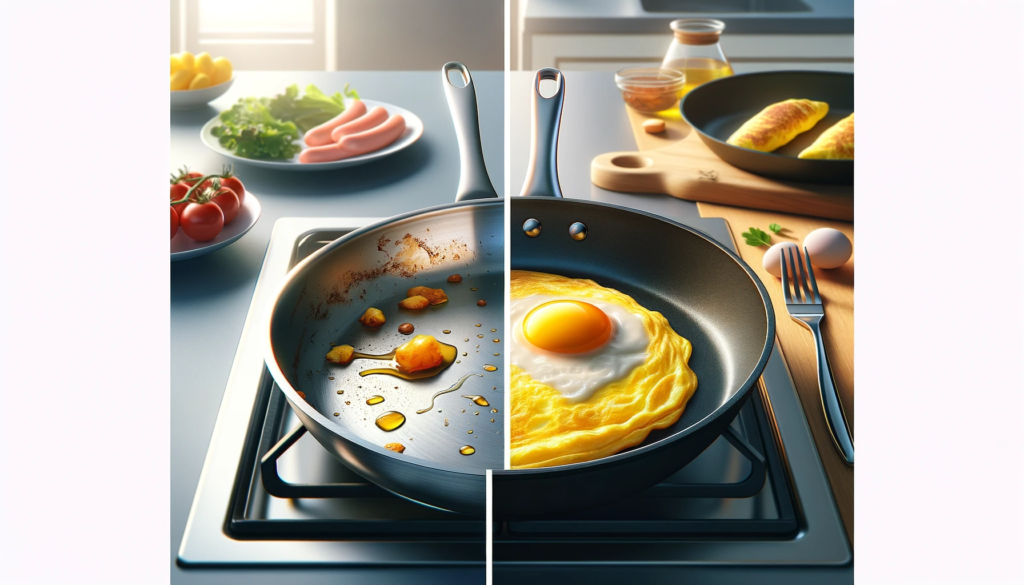
The naturally smooth, non-porous surface of stainless steel does make it prone to having some foods and cooking residues stick while preparing meals.
Meat proteins, eggs, baked goods, sugary syrups, and more tend to cling to stainless steel readily without sufficient oil or butter lubrication.
This sticking tendency can lead to burning sweet sauces or charring meats directly onto the cook surface if not properly monitored and controlled.
Nonstick pans now surpass stainless steel for tackling the most sticking-prone cooking jobs like omelets, pancakes, and fish fillets.
Modern nonstick finishes make eggs, crepes, and other tricky foods slide right off the pans surface almost effortlessly.
Stainless steel still plays an important role for boiling eggs, frying meats, deglazing fond, and general purpose cooking.
But keep some quality nonstick pans too for the trickiest sticky foods.
A good set of both nonstick and stainless offers the best of both worlds.
Hard to Season
While a natural protective patina certainly builds up slowly on stainless steel from repetitive home cooking, it never quite reaches the non-stick performance achieved by properly seasoned cast iron or carbon steel.
Plant-based oils baked onto those more porous metals physically alter the upper metal layers, forming an almost nonstick surface.
Stainless steel remains somewhat sticky and prone to minor adhering even after considerable time developing natural patina.
Maintaining any nonstick patina on stainless steel requires periodic renewal since it gets washed away steadily by cleaning.
Each dish washing session erodes built up seasoning oils, so reapplication before subsequent cooking is needed.
For the absolute best and most reliable nonstick cooking performance over time, options like ceramic, quality nonstick coatings, anodized aluminum, and well seasoned cast iron typically outperform stainless steel.
Easy to Scratch
Higher nickel content stainless steel alloys generally hold up quite well to metal cooking implements, utensils, dish washing, and minor cleaning abrasion without damage over time.
But cheaper grades of stainless steel using less nickel content and thinner metal gauges tend to scratch and stain more readily – destroying their original pristine beauty prematurely.
Lower nickel means softer, less resilient steel.
Seek out high quality 18/10 stainless steel for improved scratch resistance when purchasing new pots and pans.
18/10 stainless contains 18% chromium for corrosion resistance paired with 10% nickel for enhanced scratch prevention and strength.
By comparison, lower 10/5 nickel stainless saves money upfront but leads to quicker unappealing visible surface scrapes, scuffs, and damage with regular cooking use.
The extra nickel stands up better to spatulas, spoons, whisks, scrubbing pads and other kitchen encounters; preserving attractive good looks for years to come.
Conclusion
In conclusion, stainless steel cookware provides unmatched durability and stain resistance that makes it a kitchen staple for generations.
While it can be expensive and prone to sticking, choosing thicker gauges with enhanced heating properties helps maximize the significant benefits of stainless steel over most other cookerware materials.
Weigh your cooking priorities and stainless steel’s pros and cons thoughtfully before investing.
